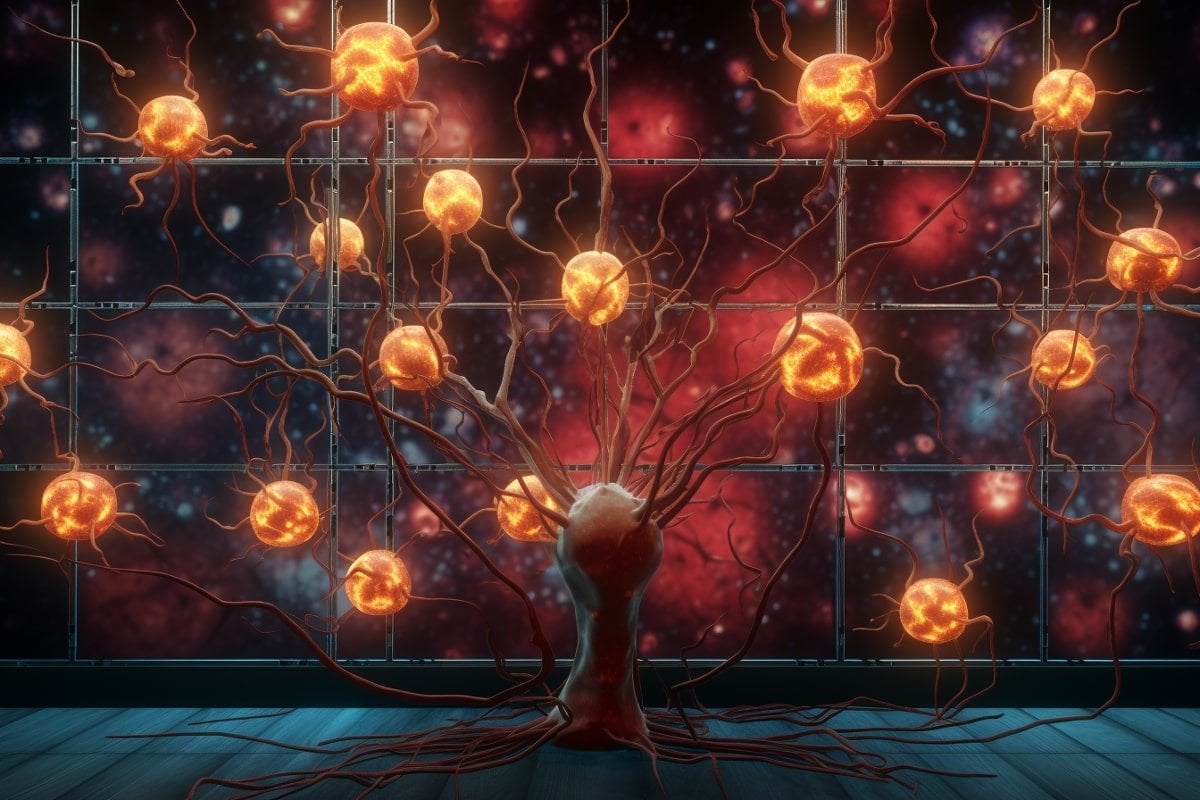Summary: Researchers leveraged a tracking algorithm from video games to study molecules’ behavior within live brain cells.
They adapted the fast and accurate algorithm used to track bullets in combat games for use in super-resolution microscopy. The innovative approach enables scientists to observe how molecules cluster together to perform specific functions in space and time within the brain cells.
The data obtained could shed light on molecular functions’ disruption during aging and disease.
Key Facts:
- The researchers utilized a video game algorithm, optimized for tracking bullets in combat games, to analyze the movements and behaviors of molecules within live brain cells.
- This technology allows scientists to observe in detail how and when molecules cluster together within brain cells to perform specific functions – a task previously unachievable with existing technology.
- The team is currently applying this technology to study proteins essential for communication within brain cells, potentially accelerating scientific discoveries in neuroscience.
Source: University of Queensland
University of Queensland researchers have used an algorithm from a video game to gain insights into the behaviour of molecules within live brain cells.
Dr Tristan Wallis and Professor Frederic Meunier from UQ’s Queensland Brain Institute came up with the idea while in lockdown during the COVID-19 pandemic.
“Combat video games use a very fast algorithm to track the trajectory of bullets, to ensure the correct target is hit on the battlefield at the right time,” Dr Wallis said.
“The technology has been optimised to be highly accurate, so the experience feels as realistic as possible.

“We thought a similar algorithm could be used to analyse tracked molecules moving within a brain cell.”
Until now, technology has only been able to detect and analyse molecules in space, and not how they behave in space and time.
“Scientists use super-resolution microscopy to look into live brain cells and record how tiny molecules within them cluster to perform specific functions,” Dr Wallis said.
“Individual proteins bounce and move in a seemingly chaotic environment, but when you observe these molecules in space and time, you start to see order within the chaos.
“It was an exciting idea – and it worked.”
Dr Wallis used coding tools to build an algorithm that is now used by several labs to gather rich data about brain cell activity.
“Rather than tracking bullets to the bad guys in video games, we applied the algorithm to observe molecules clustering together – which ones, when, where, for how long and how often,” Dr Wallis said.
“This gives us new information about how molecules perform critical functions within brain cells and how these functions can be disrupted during ageing and disease.”
Professor Meunier said the potential impact of the approach was exponential.
“Our team is already using the technology to gather valuable evidence about proteins such as Syntaxin-1A, essential for communication within brain cells,” Professor Meunier said.
“Other researchers are also applying it to different research questions.
“And we are collaborating with UQ mathematicians and statisticians to expand how we use this technology to accelerate scientific discoveries.”
Professor Meunier said it was gratifying to see the effect of a simple idea.
“We used our creativity to solve a research challenge by merging two unrelated high-tech worlds, video games and super-resolution microscopy,” he said.
“It has brought us to a new frontier in neuroscience.”
About this neuroscience research news
Author: Lisa Clarke
Source: University of Queensland
Contact: Lisa Clarke – University of Queensland
Image: The image is credited to Neuroscience News
Original Research: Open access.
“Super-resolved trajectory-derived nanoclustering analysis using spatiotemporal indexing” by Tristan Wallis et al. Nature Communications
Abstract
Super-resolved trajectory-derived nanoclustering analysis using spatiotemporal indexing
Single-molecule localization microscopy techniques are emerging as vital tools to unravel the nanoscale world of living cells by understanding the spatiotemporal organization of protein clusters at the nanometer scale.
Current analyses define spatial nanoclusters based on detections but neglect important temporal information such as cluster lifetime and recurrence in “hotspots” on the plasma membrane. Spatial indexing is widely used in video games to detect interactions between moving geometric objects.
Here, we use the R-tree spatial indexing algorithm to determine the overlap of the bounding boxes of individual molecular trajectories to establish membership in nanoclusters.
Extending the spatial indexing into the time dimension allows the resolution of spatial nanoclusters into multiple spatiotemporal clusters.
Using spatiotemporal indexing, we found that syntaxin1a and Munc18-1 molecules transiently cluster in hotspots, offering insights into the dynamics of neuroexocytosis.
Nanoscale spatiotemporal indexing clustering (NASTIC) has been implemented as a free and open-source Python graphic user interface.






